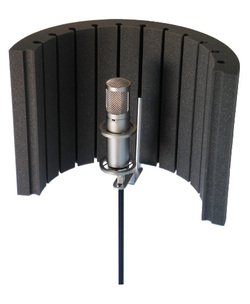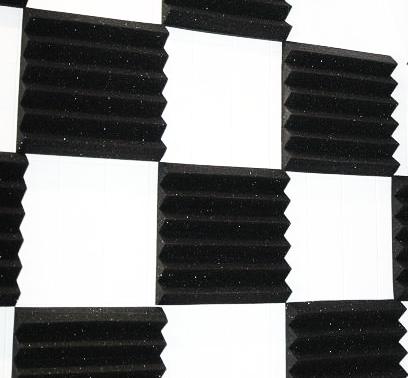
You can't have a home studio without some sort of acoustic foam. It's important to insulate the walls of your recording space for two reasons.
How to setup acoustic foam in a home studio
The main area of interest when you attempt to insulate a recording and mixing area, are the area around the microphone and around the speakers. In the microphone area, you should insulate the wall behind the microphone, and the sidewalls. An alternative scenario is to use an acoustic foam especially made for the microphone, just like in the picture above.
- You really don't want your neighbors to hear what you are doing in your home studio, and in the same time you don't want your microphone to capture any sounds from neighbors.
- When you record and mix a song, it's better to have a minimum echo from the room. You need to work with clear sound. If you want echo or reverb, you can add it in the mixing process, but when you record, you need to record clear sounds.
How to setup acoustic foam in a home studio
The main area of interest when you attempt to insulate a recording and mixing area, are the area around the microphone and around the speakers. In the microphone area, you should insulate the wall behind the microphone, and the sidewalls. An alternative scenario is to use an acoustic foam especially made for the microphone, just like in the picture above.
Insulating the mixing room is not that difficult. Place the foam panels on the sidewalls in the pattern you see above, especially on the year level of the sidewall. Also, be sure to place two panels behind the speakers, you will fix the sound cancellation reflections. If you have a budget for it, buy a pack of bass trappers and place them in the upper corners of the room. Those will definitely reduce the bass reflections in the room.
You're good to go now.
You're good to go now.

 RSS Feed
RSS Feed